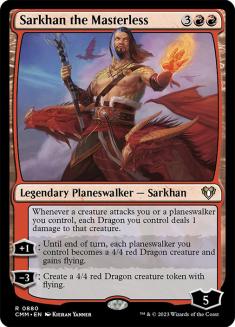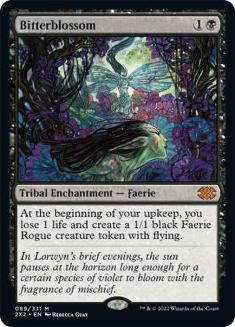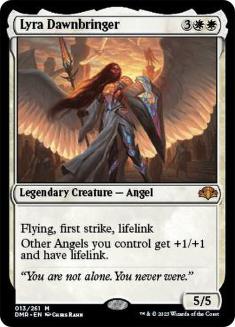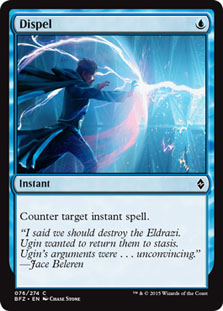In my five-plus years as a content creator, it has become clear to me that sideboarding is the most difficult aspect of competitive Magic, or at least the one that causes players the most headaches. The rise and proliferation of the ever-controversial sideboard guide in that time is a clear testament to that fact.
But as important as sideboard guides have become in Magic content, we all know, creators and consumers, that they’re inadequate. A sideboard guide only teaches you the basic ins and outs for a specific set of matchups, and at a specific point in time. But Magic is a dynamic game, where things change from week to week and new decks fade or pop up, as does new tech. In order to make the most out of your sideboards, it’s necessary to understand the why of it all, and apply those principles to different matchups or the different ways your opponents approach a given matchup.
Obviously the latter is a much harder task, which is why sideboarding is so intimidating for most players, and the cliche that sideboarding is more art than science is certainly true. There’s no exact process you can follow to get the right answer, and as you gain more experience, your intuition for sideboarding will improve, but there are certain heuristics which you can follow to improve your sideboarding, both in the short-term when you’re mainly relying on sideboard guides, and in the long-term when you gain a more general understanding of sideboarding principles.
Here are seven of those heuristics, which I follow to craft my own sideboard guides or adjust to a new matchup on the fly.
1. Inevitability Determines Role Assessment
In an aggro on control matchup, or midrange on control, it’s clear the first deck listed is the beatdown. In both cases there’s a huge disparity in how the end-game will play out, lopsidedly favoring the latter. But in other cases it’s not so clear, often in matchups between distinct decks with a similar strategy, like a midrange or aggro mirror.
In matchups like these, role-assessment is huge, and for me it all comes down to who is favored in the late-game. The person who is favored going long is happy to keep parity early on and steer the game toward a place where they’re advantaged. Conversely, their opponent is playing the game with a doomsday clock ticking down to their eventual demise. The onus is on them to end the game before reaching that end-game scenario, and their sideboard plan should reflect that.
Many players are tempted to become reactive in this scenario, trying to take the inevitability from their opponent, and with the right cards such a plan can work, but it’s more reliable to shift gears and get aggressive. This doesn’t mean sideboarding a bunch of cheap creatures in your control deck, but something like Sarkhan the Masterless can help you pressure your opponent if you’re playing other planeswalkers, or a cheap threat like Bitterblossom can give you an early clock your opponent wasn’t expecting to have to answer. The specific threats you use will of course change with the format, the metagame, and the matchups you’re trying to combat, but these are the kinds of cards I look for when I’m forced to be more aggressive.
2. Reactive on the Draw, Proactive on the Play
This second principle is one that makes clear that Magic mostly exists in areas of gray. You may be the aggressive deck in a given matchup, but that doesn’t mean you should cut all your removal and play a curve that stops at three. The high level of nuance in sideboarding is why it’s more art than science. Exactly how to craft your curve and how many reactive cards to include is rarely obvious.
But what you should be doing more of is adjusting when you’re on the play versus when you’re on the draw. Being on the play gives you a naturally more proactive position in the game, where being on the draw puts you in a more reactive position. On the play, you’ll have more opportunities to cast threats onto an empty battlefield, and even if you’re trying to play a long game, taking advantage of those opportunities is helpful. Having a key blocker out may invalidate their next threat, buying time to cast a card draw spell, or make it safe to land a planeswalker that can start a snowballing advantage.
If your hand is too full of removal spells when on the play, you’re likely to waste mana and effectively cede your tempo advantage to your opponent. Conversely, when you’re on the draw and your hand is full of threats, you’re forced to curve out and hope it’s good enough to maintain parity when answers are generally more efficient at doing so.
The adjustment you should make is small, usually only a few cards, but Magic is a game of small edges.
3. Linear Decks Sideboard Minimally
The single most common sideboarding mistake I see people make is to over-sideboard with linear decks. Mostly it comes from having too reactive a mindset, where you think, “Okay, I have problems with cards X, Y, and Z from my opponent, so I’ll bring in spells A, B, and C to remove them.” But when you do that as a linear deck, you don’t leave yourself enough of your core pieces to beat your opponent’s remaining cards.
Linear decks are generally trying to assemble powerful synergies and that requires a lot of redundancy to do so consistently, especially when your opponent has disruption of their own. The more you trade one-for-one, the more the remaining cards fight on their individual power level, and linear decks don’t shine in those games. Your aggressive white deck needs enough one-drops to cast Venerated Loxodon early, and your Simic Nexus deck needs enough card draw to find its key components. Without these synergies, it won’t matter how much removal you have.
The single most common sideboarding mistake I see people make is to over-sideboard with linear decks.
Always remind yourself that it’s your opponent who is trying to trade one-for-one with you via their removal, discard, and counterspells, and you should only be playing their game when it’s absolutely necessary.
So, the question you should be asking yourself here is, “How many slots can I afford to spend on reactive cards in this matchup?” Once you decide on a rough number, you can choose the most pertinent threats from the opponent and bring in the right answers. You’ll lose some games to the cards you can’t efficiently answer, but not as much as you’d lose from hampering your own gameplan.
4. Aggro Mirrors Are About Combat
This sounds obvious, but the details are important and the operative, if complicated, question to ask yourself is which player is naturally advantaged in combat. In most aggro mirrors, you can’t gain a significant tempo advantage from just curving out, so being disadvantaged in combat means you have to shift to a more reactive role, answering your opponent’s better creatures with removal, and either gaining a tempo advantage through those removal spells or playing an attrition game with some sources of card advantage.
When you’re advantaged in combat, there’s no reason to deviate much from your regular plan. The key adjustment to make is to try to diversify your threat base so your opponent’s removal isn’t as effective. This is a classic case of if it ain’t broke, don’t fix it and a danger spot where players often play into their opponents’ hands by being too reactive and thereby ceding some of their advantage in combat.
Things get more interesting when you’re roughly even. At this point it becomes a matter of trying to find cards that dominate combat. Think Rekindling Phoenix and Lyra Dawnbringer, though a solid planeswalker can also do the trick. You want a card that is powerful enough to win a game by itself yet also doesn’t die to commonly played removal, though the former aspect is the more important of the two.
5. Break Control Mirrors with Cheap Spells
Control mirrors are often long, drawn-out affairs where both players make ten or more land drops, slowly building to a pivotal turn with a huge counter war that puts one player insurmountably ahead. That’s the nature of a matchup where most of the cards are lands and reactive spells.
Winning those counter wars is difficult because if you’re the one who presents the first threat, you’re down some mana and thus disadvantaged in the battle over it. The clear path to winning these counter wars is including more cheap counterspells. Dispel, Negate, and now Mystical Dispute are critical in control mirrors for this reason, and similar spells will fill the same role in the future.
But there’s another route to break the long-game paradigm: cheap threats, cards that you can resolve early and will end the game before you get to that Turn 15 counter war. These cards are much easier to resolve earlier in the game when your opponent only has something like a Sinister Sabotage against your Mystical Dispute, and even if you lose the battle over your cheap threat, they don’t have enough mana to land a big threat while you’re tapped out. It’s a low-risk, high-reward play.
Once you resolve that threat, your opponent is eventually forced to blink first and initiate the counter war, so you’re naturally advantaged in it. The more pressure they are under to initiate the better, but the key is that your early threat dodges those cheap counterspells, so it’s easier to resolve. Even better if it’s a flash threat like Brazen Borrower or Vendilion Clique so you can pick a fight on their end step, leaving your turn free to resolve something more powerful if they commit too many resources to the bait spell.
6. Adjust to Your Opponent
This principle applies once you’ve played a bit with your deck, have a plan in mind for your common matchups, and can generally anticipate what your opponents will do as well. At this point you’re in danger of running on auto-pilot, which can bite you when your opponent does something unexpected.
The thing is, whether or not you think your opponent is right to do so, you should be adjusting to what they’re actually doing. If they’re going more aggressive, lower your curve and bring in more cheap removal. If they’re going bigger, you can match them or try to catch them off-guard and go low.
The key here is to try to get inside your opponent’s head and figure out how they view the matchup. Then, you can anticipate what else they have based on that. However, sometimes you run into a player who is lost and hasn’t really formed a cohesive plan. If you try to get inside their head you will get lost yourself, so at that point it’s best to fall back on your existing heuristics and rely on your cohesiveness and better understanding of the matchup to carry the day.
7. Sometimes the Cards Aren’t There
All of these principles are based in a theoretical world where anything is possible. But every metagame exists in a restricted world based on the format. Sometimes you don’t have good options for cheap counterspells in the control mirror, or a good trump card for your aggro mirror. Sometimes you don’t have the right removal spells to turn a matchup around. It can be frustrating when you’ve unturned every stone and found nothing but dirt and moss, but restriction breeds creativity.
As your understanding of these, and other principles improves, you’ll be better equipped to get creative, so don’t settle for a plan that your testing shows is inadequate just because it meets the above criteria. Ultimately we’re trying to win games of Magic, not min-max to find the best of a bad bunch. Play around a bit and see if you can find something that works. This is where the artistry really comes in.

Understanding these principles will help you understand why other players sideboard the way they do when you’re reading from a guide, and give you the confidence to deviate from that guide when unique situations arise, or when you have to swap out some cards to handle a new matchup.
Sideboarding is hard precisely because it requires a deep understanding of Magic on a fundamental level and the ability to apply that understanding to a myriad of unique circumstances with dozens of variables. There’s no shame in relying on guides early on with a deck, but if you want to maximize your potential, you should be working to strengthen your own understanding so you don’t have to depend on them.







